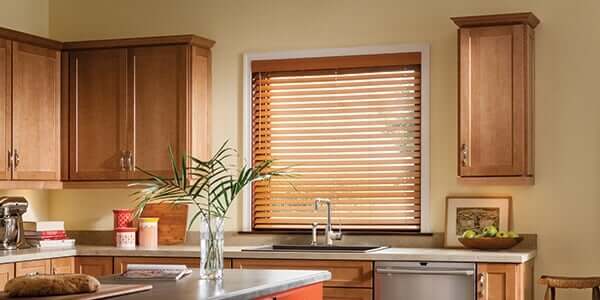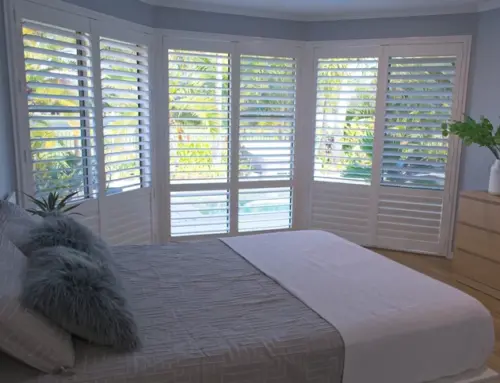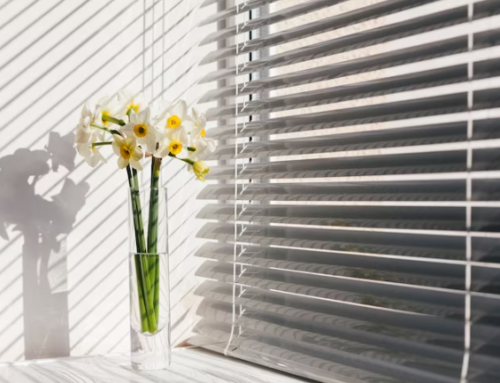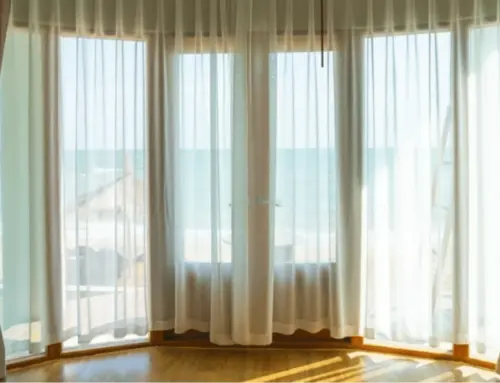Faux wood blinds used to be the go-to choice for homeowners looking for an affordable alternative to real wood. Fast forward to today, and they’re not just about saving money—they’re about making a statement. With improved textures, realistic wood grains, and a variety of finishes, they bring warmth and elegance to any space without the maintenance hassle of real wood.
Whether you prefer a crisp, modern aesthetic or a cozy, rustic charm, there’s a faux wood option that fits your style. And the best part? They’re built to last—resistant to warping, fading, and moisture, making them ideal for kitchens, bathrooms, and sun-soaked rooms.
No longer just a budget pick, these blinds have evolved into a key player in home design, offering the perfect balance of beauty and practicality. If you haven’t considered them in a while, now’s the time to take another look.
How have faux wood blinds changed over time to fit modern home design?
Faux wood blinds have significantly evolved to better fit modern home design needs, blending functionality with aesthetic appeal. Here’s how they’ve adapted:
- Improved Materials: Initially, faux wood blinds were made from basic PVC or vinyl, which lacked the realistic look of wood. Today, they are crafted from high-quality composite materials that mimic the look and texture of real wood while offering better durability and resistance to moisture, warping, and fading.
- Expanded Color and Finish Options: Modern faux wood blinds come in a wide range of colors, finishes, and textures, allowing homeowners to choose options that complement their décor. Whether a rustic oak or a sleek, modern white finish, faux wood blinds offer versatile design possibilities.
- Customization: Faux wood blinds are now customizable in varying sizes, from traditional 2-inch slats to larger 3—or 4-inch slats. This allows homeowners to adjust the light control and privacy level, making them suitable for various room sizes and styles.
- Incorporating Smart Technology: Many faux wood blinds now have smart features, such as remote control or automated adjustments via apps or home assistants like Alexa. This integration with modern technology makes them a convenient and stylish addition to contemporary homes.
- Environmental Considerations: Manufacturers now focus on producing faux wood blinds using eco-friendly materials, offering sustainable alternatives to natural wood, which appeals to environmentally-conscious consumers.
The combination of modern materials, design options, and technological features has transformed faux wood blinds into a highly functional and stylish window treatment that meets the needs of today’s homeowners.
What materials and technologies are used in today’s faux wood blinds?
Today’s faux wood blinds incorporate advanced materials and technologies, enhancing functionality and aesthetic appeal. Here’s a breakdown of the materials and technologies used:
- High-Density PVC and Composite Materials: Modern faux wood blinds are often made from high-density PVC, which provides a sturdy, durable structure while resisting moisture, warping, and fading. Composite materials, such as a blend of wood particles and PVC, offer a more realistic wood-like appearance while still being lightweight and resistant to the elements.
- Polystyrene Core: Some faux wood blinds use a polystyrene core, which makes them lightweight, energy-efficient, and more affordable. This material offers added insulation by reducing heat transfer through the windows, helping to maintain room temperature.
- Laminated Finishes: Faux wood blinds often feature laminated finishes that mimic real wood’s natural textures and grains. These finishes can be textured or smooth and are available in various colors and wood tones, such as oak, cherry, or walnut.
- UV-Resistant Coatings: Many faux wood blinds are coated with UV-resistant finishes to prevent fading and discoloration from prolonged exposure to sunlight. This helps maintain the blinds’ appearance for years, even in high-traffic areas or sun-drenched rooms.
- Smart Technologies: Faux wood blinds can now integrate with smart home systems, offering remote control operation, automatic adjustments based on time of day or light levels, and compatibility with voice-activated assistants like Alexa or Google Home.
- Eco-Friendly Materials: Some manufacturers create faux wood blinds using recycled materials or eco-conscious production methods, appealing to environmentally conscious consumers seeking sustainable window treatments.
The combination of durable materials and modern technologies makes today’s faux wood blinds a versatile and long-lasting option that meets the demands of both functionality and style in contemporary home design.
Why are faux wood blinds a popular choice for contemporary interiors?
Faux wood blinds have become popular for contemporary interiors due to their blend of style, durability, and affordability. Here are the key reasons for their popularity:
- Durability and Longevity: Unlike real wood, faux wood blinds are highly resistant to moisture, warping, cracking, and fading. This makes them ideal for high-humidity areas like kitchens, bathrooms, and basements, where real wood may deteriorate over time.
- Cost-Effective: Faux wood blinds provide the look of real wood at a fraction of the cost. Homeowners can achieve the same elegant, timeless appearance without breaking the budget, making them an accessible choice for various interior designs.
- Low Maintenance: Faux wood blinds are easy to clean and maintain. Unlike real wood, they don’t require regular polishing or special treatments to keep them looking good. A simple wipe-down with a damp cloth is all needed to remove dust and grime.
- Variety of Styles and Colors: Faux wood blinds come in a wide variety of colors, textures, and finishes that mimic the natural appearance of wood. From sleek, modern whites to rich, wood-like finishes, there’s an option for any interior style.
- Energy Efficiency: Faux wood blinds help with insulation by reducing heat transfer through windows. This can contribute to lower energy bills, making them both a functional and eco-friendly choice.
- Ease of Customization: Faux wood blinds are available in various slat sizes, allowing homeowners to customize the level of light control, privacy, and ventilation they need.
These benefits, combined with their timeless appeal, make faux wood blinds a versatile and practical option for modern homes. They provide a stylish yet durable window treatment solution.
How do modern faux wood blinds compare to traditional wood blinds?
Modern faux and traditional wood blinds have their advantages but differ in materials, durability, maintenance, and cost. Here’s how they compare:
- Material
- Faux Wood: Made from high-density PVC or composite materials that mimic the appearance of real wood. These materials are often more durable and resistant to damage from moisture or humidity.
- Wood: Made from natural wood, providing a genuine, classic look with unique grains and textures. However, wood is more susceptible to warping, cracking, and discoloration.
- Durability
- Faux Wood is highly moisture-resistant, making it ideal for high-humidity areas like kitchens and bathrooms. Faux wood blinds don’t warp or fade easily, maintaining their appearance over time.
- Wood: Wood blinds are more prone to damage from moisture, sunlight, and physical wear. To maintain their appearance, they may require refinishing or repair.
- Cost
- Faux Wood: These are more affordable than traditional wood blinds, making them a budget-friendly option for homeowners who want the look of wood without the high price tag.
- Wood: Wood is more expensive due to the cost of the raw material and the craftsmanship involved in production.
- Maintenance
- Faux Wood is easy to clean and maintain with minimal upkeep. It typically only requires occasional dusting or a wipe-down with a damp cloth.
- Wood: Requires more maintenance, such as periodic refinishing or treatment to protect against wear, moisture, or sun damage.
- Aesthetic Appeal
- Faux Wood: Provides a similar appearance to real wood but may lack the depth and natural variation that real wood offers.
- Wood: Offers a more luxurious, natural look with the unique grain patterns and color variations of real wood.
Faux wood blinds offer practical advantages such as durability, lower cost, and easier maintenance, while traditional wood blinds provide an authentic, elegant look but require more care and are more expensive.
Transform Your Space with The Blind Man Today!
Transform your space with The Blind Man today! At The Blind Man, we offer a wide variety of high-quality window treatments that will enhance the look and functionality of your home or office.
Whether looking for stylish faux wood blinds, elegant shutters, or energy-efficient shades, we have the perfect solution for any style and budget. Our expert team provides professional installation and personalized service, ensuring your windows look their best.
Don’t wait to update your home—contact The Blind Man now for a free consultation and help us create the ideal ambiance in your space!





